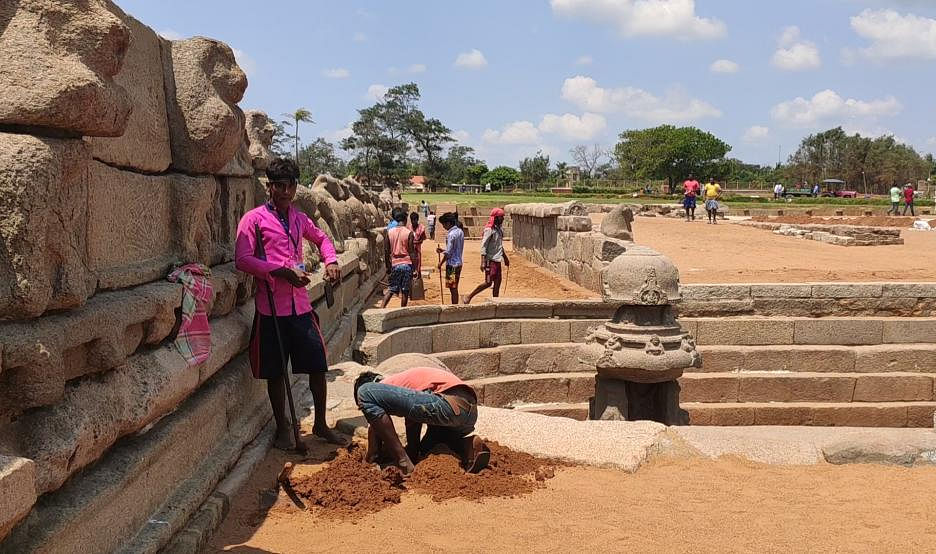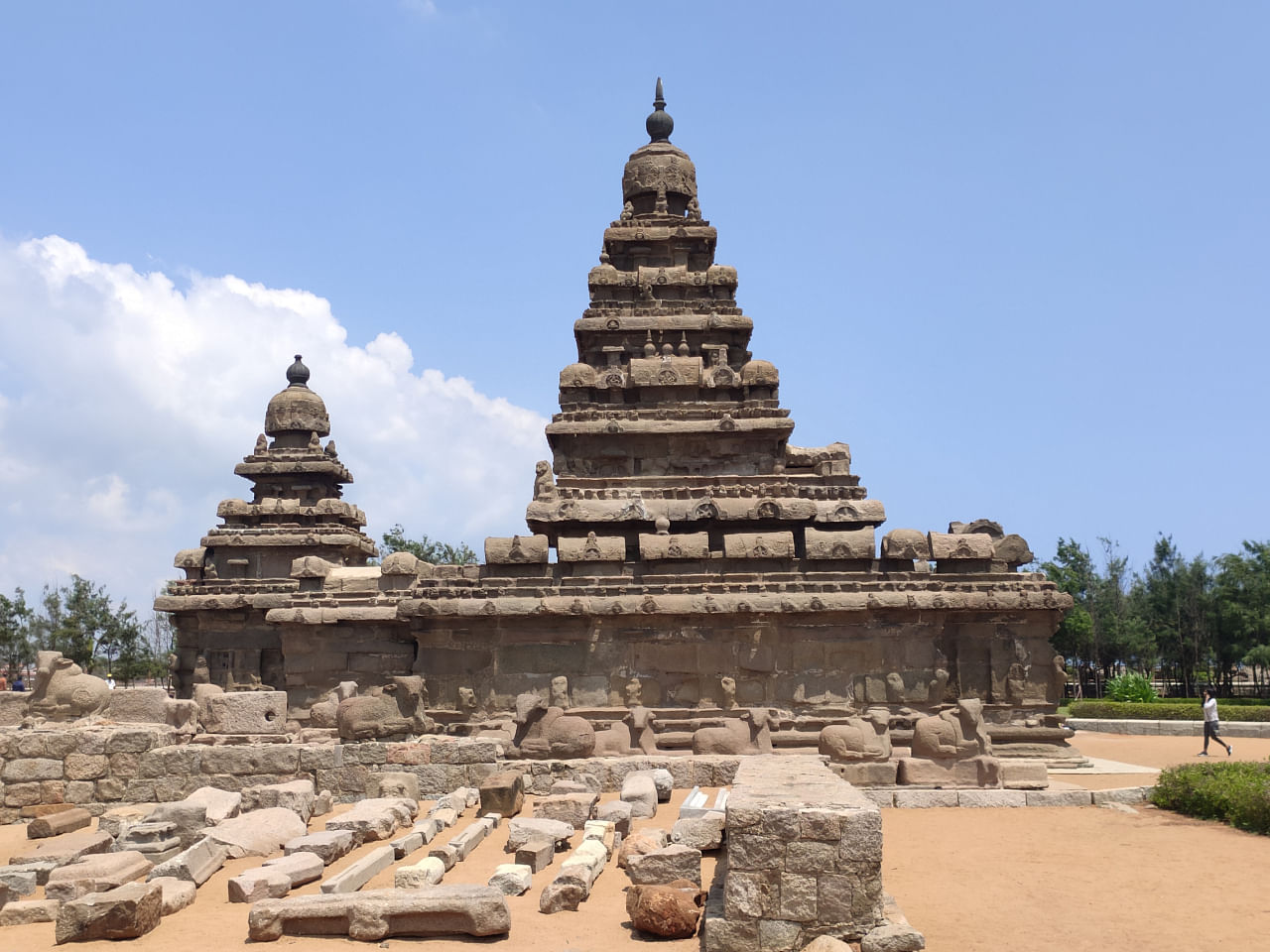

This bustling port city of the erstwhile famed Pallava Kingdom was chosen as the venue for the high-stakes second informal India-China summit as the coastal city has enjoyed trade and cultural relations with ancient China dating back to at least 2,000 years.
Historians have noted that the Pallava rulers converted Mamallapuram, 50 kms from Chennai, as the gateway for exports and imports from South East Asian countries, including China, centuries ago. Several epigraphical evidences, including coins with inscriptions of Chinese symbols, were unearthed from Mamallapuram during excavations, emphasizing the age-old links that the port city and the communist nation had shared in the past.
A flourishing port till about the end of 9th century, Mamallapuram was an integral part of the ‘Silk Route’ and ‘Spices Route’ of ancient China and India respectively. As Mamallapuram was an integral part of ancient China's Silk Route, the ties between Pallavas and the Chinese grew leaps and bounds over decades. At one point, the Pallavas and the then Chinese rulers had inked a defence pact when the latter perceived threat from the then powerful kingdom of Tibet, historians have noted.
The Pallavas sent ambassadors to China not just to improve their trade ties but to spread the ideals of Gautama Buddha and Buddhism. Pallava king Bodhi Dharma, who is credited with spreading Buddhism, is much revered in China for his contributions in introducing Zen Buddhism to the now Chinese nation.
Several epigraphical evidences, including coins with inscriptions of Chinese symbols, were unearthed from Mamallapuram during excavations, emphasizing the age-old links that the port city and the communist nation had shared in the past.
“The meeting at Mamallapuram will be a major milestone in Indo-China ties. Mamallapuram served as a major port during the Pallavas who have had much more than a working relationship with the Chinese rulers. Many documents suggest that even a defence deal was inked between the Pallavas and Chinese,” Tamil author Kayal Baradhavan, who penned a four-part novel on ‘Bodhi Dharma’ of the Pallava dynasty, told DH.
This is with this background and considering the civilizational links enjoyed for centuries that Mamallapuram was chosen as the venue for the second informal summit between the two Asian giants. The first informal summit between the two countries was hosted by China in Wuhan in April 2018.
Not just Mamallapuram, Tamil language is also a thread that connects India and China. It is believed by historians that erstwhile kings who ruled the present-day Tamil Nadu as three separate regions had taken efforts to spread Tamil in China.
Well-known authors note that some literature in Chinese sound similar to the nearly 3,000-old Sangam Literature of Tamil.
It is also believed that the thriving silk industry in Kanchipuram was first established by the Pallavas, who imported silk from ancient China and developed an industry in their own kingdom.
Chinese traveller Hiuen Tsang, who visited Kancheepuram in 7th century during the Pallava era, is the “match-maker” between India and China, says reputed archaeologist K K Muhammed.
“The notes written by Hieun Tsang in Chinese is a treasure trove. It clearly points to the fact that Buddhism travelled to China from India. Bodhi Dharma of the Pallava dynasty who is revered in China is the one who propagated Buddhism there,” Muhammed, who retired from the Archaeological Survey of India in June 2012, told DH.
Muhammed also said lots of original Chinese items like pottery and fishing nets could be found not just in Mamallapuram, but along the entire East Coast.
A flourishing port till about the end of 9th century, Mamallapuram was an integral part of the ‘Silk Route’ and ‘Spices Route’ of ancient China and India respectively. Kayal Baradhavan, who penned a four-part novel on ‘Bodhi Dharma’ of the Pallava dynasty, told DH that the meeting at Mamallapuram will be a major milestone in Indo-China ties.
Quoting noted historian K A Nilakanta Shastri’s books in which he cited writings by Chinese historians, Baradhavan said documents suggest that Pallava king Narasimhavarman II had offered to help the then Chinese rulers to take on the Tibet and Arab rulers.
“When Narasimhavarman II offered help, the Chinese king had asked him to give a name for the force. The Pallava king zeroed-in on Ozhukam Penum Padai (The force that follows discipline) and was declared as the general of South China,” Baradhavan said, noting that Tibet was then a very powerful nation and was a threat to China.
The historical, civilizational and trade links between Mamallapuram, a port town that is believed to have existed even before the Pallavas, and ancient China add much significance to the next week’s high-profile meeting between leaders of the two countries.